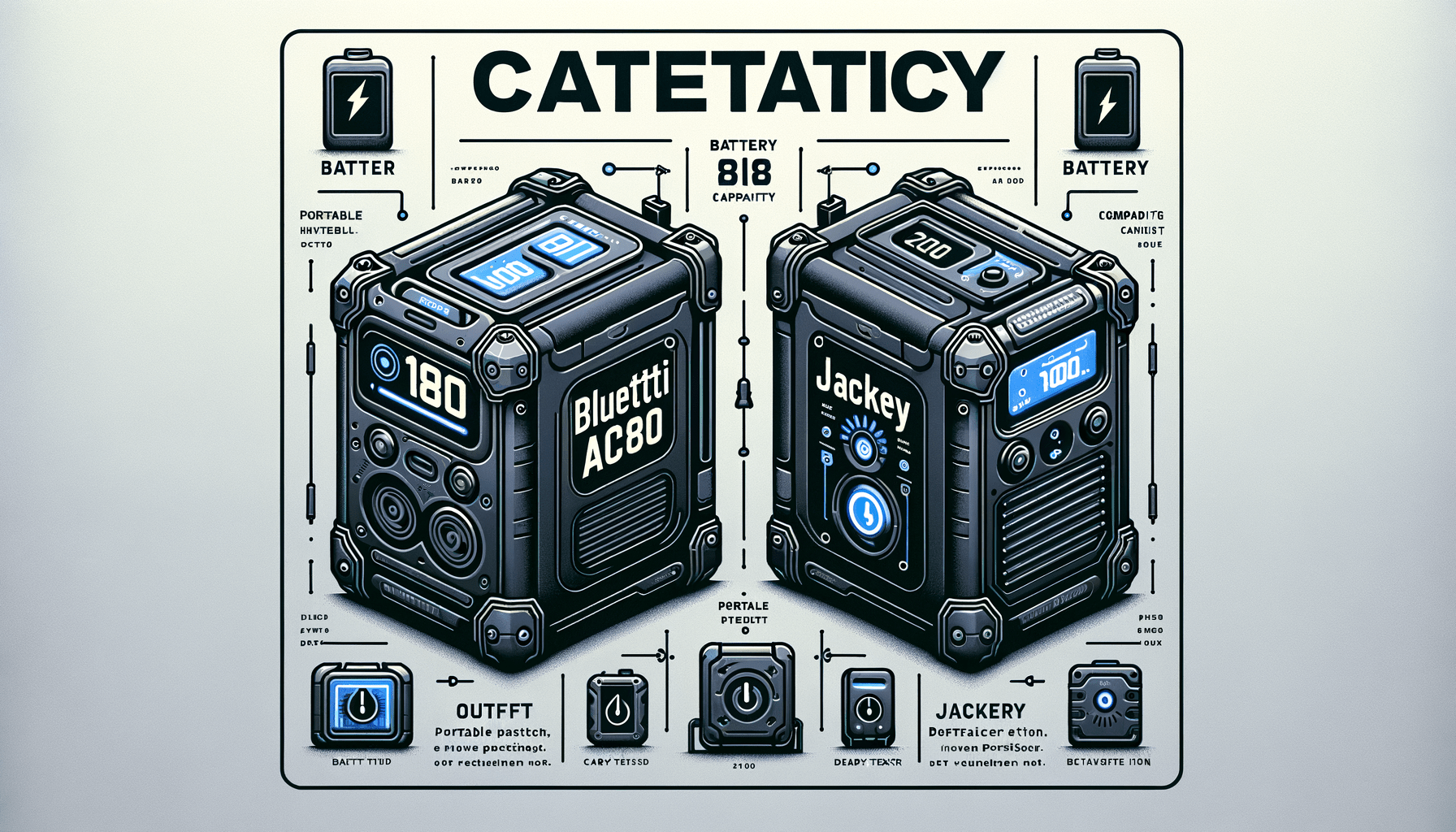Introduction
When venturing off the grid or preparing for potential power outages, having a reliable portable power station is a game-changer. Today, we’re comparing two heavyweight contenders: the EcoFlow River 2 and the Bluetti AC200MAX. Both have their unique features and specifications, which we’ll dive into, helping you decide which portable power solution is right for you.
Design and Portability
Out of the gate, the EcoFlow River 2 boasts a compact form factor with dimensions of 245 x 215 x 145mm and a featherweight status at just 7.7 lbs. Meanwhile, the more robust Bluetti AC200MAX offers an expanded energy reservoir but demands more real estate and muscle to move at 42 x 28 x 38.65cm and 61.9lbs. The choice between portability and power depends on your specific needs be it light trekking or settling into a semi-permanent campsite.

Battery Capacity and Life Cycle
Battery capacity could be a dealmaker or breaker, and this is where clear differences emerge. While we’re waiting to confirm the exact capacity of the EcoFlow River 2’s advanced Lithium-ion battery, it’s known for fast charging within 1 hour. The Bluetti AC200MAX starts with a substantial 2,048Wh LiFePO4 battery that’s expandable up to a hefty 8,192Wh. It’s not just the size that matters; we’re talking about 3,500+ cycles to 80% with Bluetti, marking substantial longevity. If your adventures or emergencies require long-term power without frequent recharging opportunities, Bluetti seems to have an edge.

Charging and Power Output Options
The flexibility of charging options can be critical, especially when out in the unknown. The River 2 offers numerous output ports including USB-C and AC outlets, catering to 99% of consumer electronics. On the other hand, the AC200MAX not only delivers more AC and USB ports but also features a greater continuous and surge power output (2,200W/4,800W) which allows operation of heavier equipment for extended periods. The River 2 is undoubtedly efficient, but when it comes to powering an entire campsite or backup home energy, the AC200MAX serves up more muscle.
Recharging Speed and Solar Efficiency
Recharging when on the go is a cornerstone of portable power. The River 2 impresses with a super speedy charging capability, going from empty to full in just an hour. Bluetti’s AC200MAX accepts solar input of up to 900W, perfect for those sunny days, and offers a dual-charging feature where solar is paired with AC to reduce total recharge time. If quick turnaround is for you, EcoFlow shines; however, for those relying more on the sun, Bluetti’s solar input might be your ray of hope.
Side-by-Side Specification Comparison
| Feature | EcoFlow River 2 | Bluetti AC200MAX |
|---|---|---|
| Weight | 7.7 lbs | 61.9 lbs |
| Battery Type | Lithium-ion TBD | LiFePO4 |
| Capacity | TBD | 2,048Wh (expandable up to 8,192Wh) |
| Life Cycle | 3000 cycles @ 80% | 3500+ cycles @ 80% |
| AC Output | 300W total (600W peak) | 2,200W continuous (4,800W surge) |
| Max Solar Input | 110W | 900W |
| Charging Time | 1 hour full charge | Variable dual-charging capability |
| Number of USB-C Ports | 1 | Several |
| Expandability | No | Yes, with B230 or B300 batteries |
| App Control | No | Yes, through the BLUETTI App |
Sustainability and Lifecycle
In today’s eco-conscious market, the environmental footprint is more relevant than ever. Both units are built with sustainability in mind. EcoFlow leverages energy-efficient tech aiming to decrease environmental impact, while Bluetti’s long-lasting LiFePO4 battery implies less frequent replacements and reduced waste. The longevity of both products is noted, yet Bluetti’s expanded lifespan may transmit to greener pastures over extended use.
Conclusion
Choosing between the EcoFlow River 2 and Bluetti AC200MAX boils down to your power needs, portability requirements, and how eco-friendly you want your footprint to be. For the wanderlust looking for quick charging and light baggage, the River 2 is a snug fit. But if you’re anchoring down or need power-heavy support, Bluetti’s rugged AC200MAX with expansion capabilities might just be your power lifeline. Assess your needs, consider your use-case scenarios, and weigh the specs we’ve unpacked. The power is indeed in your hands!


Leave a Reply